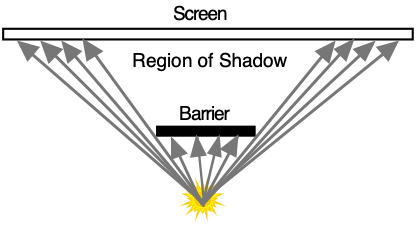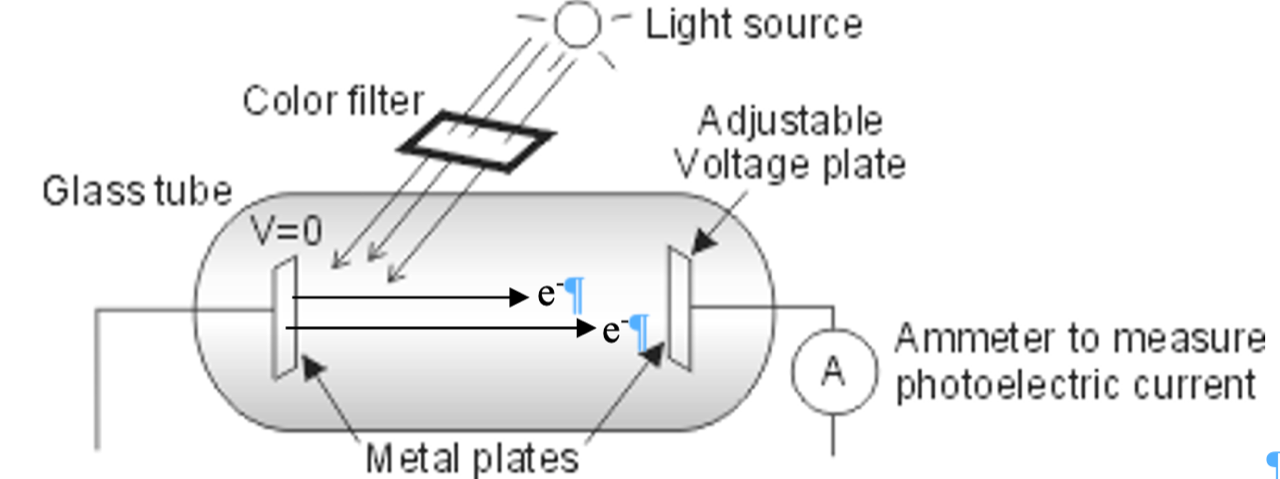Introduction / Brief History
Most treatments of light and optics become an enormous list of topics with little conceptual coherency. The model-based approach is guided by the question, “What is Light?” The modern model of light is complex and involves aspects of both particles and waves.
Presenting a single unified model without background in the particle nature and the wave nature of light would challenge any concept flow. In this set of materials, the features and explanatory power of both particle and wave models of light are examined.
The particle model is presented first because students are more familiar with the concepts involved because of their work in mechanics. In addition, this unit provides an opportunity to introduce the students to many of the different behaviors of light. The particle model is very successful in the treatment of straight-line travel, reflection, and energy transfer, but is less successful for refraction and diffraction.
Modification of this model to account for these phenomena makes the model far more complex than a simple sphere traveling through space. Our choice then is to accept and “fit” this complex particle model, or to seek a simpler model. That simpler model might be the wave.
One of the difficulties with the wave model concerns the student’s familiarity with waves. While all students are familiar with particles, having tossed objects or played pool, they are far less knowledgeable about wave behavior. The wave model will involve more experience with the nature of waves as well as its appropriateness as a model for light. Reflection, energy transfer, refraction, diffraction, interference, and straight-line travel are well described by a wave model. In addition, color can be understood in wave terms. While this model seems to overcome all our difficulties with the particle model, waves predict that light energy should be a function primarily of amplitude. The photoelectric effect demonstrates a connection between the frequency of light and energy, and requires us to re-examine our rejection of the particle model.
The photon model is now explored and students are introduced to concepts of atomic structure, spectra, and the quantization of light. The student is now in a position to view light as a model with wave like behaviors and particle like behaviors. The wave nature of light is more obvious for long wavelength “light” such as radio or microwaves where the energy of single photons are difficult or impossible to detect and group behavior becomes more observable. The particle nature of light is more observable for short wavelength “light” such as x-rays and gamma rays, where the energy of each particle is so high, that paths of individual particles can be easily detected.
The student should not be forced into a concept of a photon as a particle that waves. Light is neither a particle nor a wave; light is light. In some instances, light exhibits wave properties; in others, light exhibits particle properties. In some instances, light seems to behave as a wave and a particle. Both these models are useful – the model used will depend to a large degree on the particular phenomenon being considered.
Sequencing
Unit 1: Particle Model of Light
- Sources and seeing
- Shadows
- Pinholes
- Light intensity
- Reflection
- Plane & (optional) Curved mirrors
- Refraction
- (optional) Lenses

Unit 2: Wave Model of Light
- Problems with the particle model
- One dimensional mechanical waves
- Two dimensional mechanical waves
- Interpreting light behavior in terms of waves
- Reflection
- Refraction
- Diffraction
- Interference
- Color

Photon Model of Light
- Photoelectric effect
- Problems with the wave model
- Bohr model of the atom
- Emission spectra
- Wave-particle duality

Sample Materials
Sample Materials Coming Soon.
Interested in a Physics: Light Workshops?
Workshops are offered each summer in a variety of locations. Check back often as workshops are always being added.
First-time attendees qualify for a free one-year membership to AMTA. Members have access to ALL instructional resources, webinars, distance learning courses, and other membership services!
If you would like to host a workshop contact: engage@modelinginstruction.org
